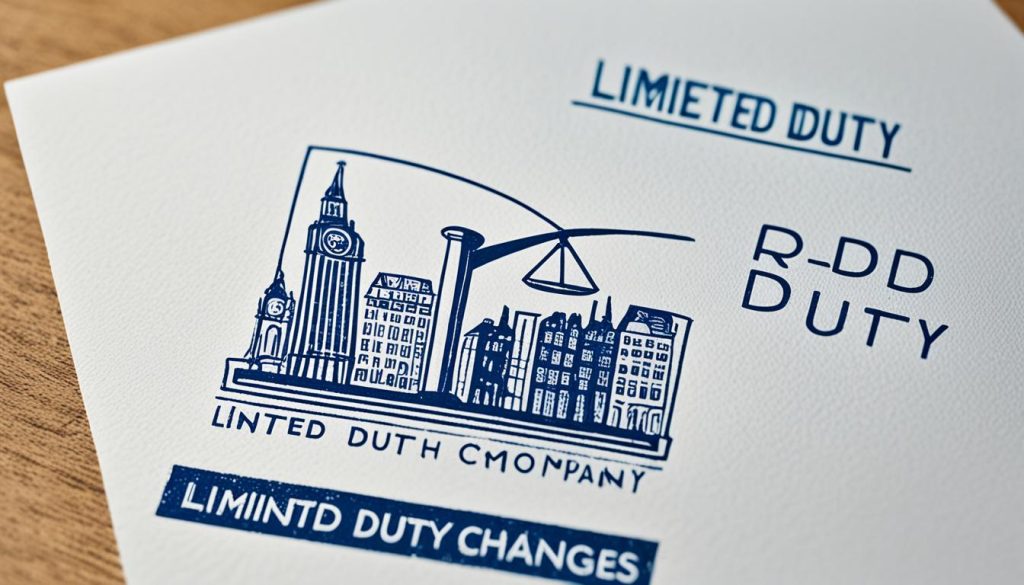Stamp Duty Land Tax (SDLT) is a tax levied on property and land transactions in the UK, including those involving limited companies. Understanding how SDLT applies to limited companies is crucial for anyone involved in property transactions, whether you’re a property investor, developer, or business owner.
In this comprehensive guide, we’ll explore everything you need to know about Stamp Duty for limited companies in the UK. From the basics of SDLT and its rates to exemptions and reliefs available for limited companies, we’ll cover it all. Whether you’re considering purchasing property through your limited company or simply want to understand the tax implications, this guide will provide you with the knowledge and insights you need to navigate Stamp Duty Land Tax in the UK effectively.
What is Stamp Duty?
Stamp Duty is a tax levied on the purchase of property and land in the United Kingdom. The amount of Stamp Duty payable varies depending on the purchase price of the property or land. It is a one-time tax paid by the buyer and is typically calculated as a percentage of the purchase price. The rates and thresholds for Stamp Duty can vary depending on whether the property is residential or commercial, whether it is in England, Wales, Scotland, or Northern Ireland, and whether the buyer is a first-time buyer or purchasing an additional property. Stamp Duty must be paid within a certain time frame after the purchase of the property or land is completed.
Paying Stamp Duty for a Limited Company Shares
When transferring shares in a limited company, the new shareholder may be required to pay Stamp Duty or Stamp Duty Reserve Tax (SDRT) depending on the method of transfer. If shares are transferred using a stock transfer form, Stamp Duty of 5% is applicable on transactions over £1,000. If shares are transferred electronically through the Crest system, SDRT of 5% is payable. The amount of Stamp Duty or SDRT is based on the purchase price of the shares, not their market value. Stamp Duty on share transfers using a stock transfer form must be rounded up to the nearest £5.
| Transfer Method | Stamp Duty or SDRT Applicable |
|---|---|
| Stock transfer form | 5% Stamp Duty on transactions over £1,000 |
| Crest system | 5% SDRT |
Stamp Duty Land Tax (SDLT) for Limited Companies
Limited companies are also subject to Stamp Duty Land Tax (SDLT) when purchasing real estate. The rates and thresholds for SDLT differ from other forms of Stamp Duty. The amount of SDLT payable depends on the purchase price and type of property. Residential properties purchased by a limited company are subject to higher rates of SDLT, which include a 3% surcharge. The specific rates and thresholds for SDLT in relation to limited companies can be found on the official government website.

Stamp Duty Changes and Considerations for Limited Companies
Stamp Duty for limited companies recently underwent changes as part of the Growth Plan announced by Kwasi Kwarteng. These changes aim to stimulate the housing market and the economy. One of the notable changes is an increase in the threshold for the 0% Stamp Duty rate for properties valued under £125,000 to £250,000.
However, it’s important to note that there was no change to the 3% surcharge for residential properties purchased above £40,000. These changes have implications for limited companies and their stamp duty obligations.
To navigate the stamp duty changes effectively, it’s crucial for limited companies to understand their specific circumstances and consult with experts for accurate guidance. Additionally, utilizing an online stamp duty calculator can provide detailed calculations tailored to the specific property and transaction of the limited company.
Stamp Duty Changes for Limited Companies – Key Considerations:
- Increased threshold for 0% Stamp Duty rate for properties under £125,000 to £250,000
- No change to the 3% surcharge for residential properties purchased above £40,000
- Consult experts for accurate guidance based on specific circumstances
- Utilize an online stamp duty calculator for detailed calculations
 <!–
<!–
| Property Value | Stamp Duty Rate for Limited Companies |
|---|---|
| £0 – £250,000 | 0% |
| £250,001 – £925,000 | 5% |
| £925,001 – £1.5 million | 10% |
| £1.5 million+ | 12% |
–>
By staying informed about the stamp duty changes for limited companies and considering the specific implications, businesses can make informed decisions and effectively plan for their stamp duty obligations.
Stamp Duty and Commercial Property for Limited Companies
Limited companies in the UK are required to pay Stamp Duty Land Tax (SDLT) on commercial properties that they purchase. Unlike residential properties, commercial properties include a wide range of assets, such as retail units, offices, warehouses, and more.
SDLT rates and thresholds for commercial property differ from those for residential property. It’s important for limited companies to be aware of these specific rates when considering the purchase of commercial property. The official government website provides detailed information on the rates and calculations for SDLT on commercial property.
Here is an overview of some key considerations regarding stamp duty on commercial properties for limited companies:
- Commercial property types: Limited companies may purchase various types of commercial properties, ranging from small retail units to large industrial buildings. It’s crucial to understand that stamp duty rates may vary depending on the type and value of the property.
- Stamp Duty thresholds: Similar to residential properties, commercial properties have different stamp duty thresholds. These thresholds determine the amount of stamp duty payable based on the purchase price of the property.
- Stamp Duty relief: Limited companies may be eligible for stamp duty relief schemes or exemptions when purchasing commercial properties, particularly if the property meets certain criteria or is located within designated areas.
To navigate the complexities of stamp duty on commercial property for limited companies, it is advisable to consult with experts or seek professional advice. Understanding the specific regulations and calculations related to SDLT can help businesses make informed decisions and ensure compliance with tax obligations.

With a clear understanding of stamp duty requirements for commercial properties, limited companies can effectively plan their property acquisitions and optimize their tax strategies to support their business growth and success.
Stamp Duty and Commercial Leases for Limited Companies
When limited companies acquire commercial leases, they may be subject to Stamp Duty Land Tax (SDLT) on the value of the lease. The calculation of SDLT on commercial leases is complex and based on factors such as the lease premium, rent payments, and chargeable considerations. The total amount of SDLT payable is determined by the Net Present Value (NPV) of the lease. It is important to consult with experts or refer to official guidelines when determining the correct SDLT rate for commercial leases.

| Lease Premium | Rent Payments | Chargeable Considerations | Total SDLT Payable |
|---|---|---|---|
| £100,000 | £10,000 per annum | £20,000 | £15,000 |
| £200,000 | £15,000 per annum | £30,000 | £25,000 |
| £300,000 | £20,000 per annum | £40,000 | £35,000 |
As shown in the table, the SDLT payable on commercial leases increases with higher lease premiums, rent payments, and chargeable considerations. The Net Present Value (NPV) of the lease is used to determine the total SDLT amount. Due to the complexity of the calculation, it is advisable to seek professional advice or refer to official guidelines to ensure accurate and compliant SDLT assessment for commercial leases.
Conclusion
In conclusion, understanding the implications of stamp duty for limited companies in the UK is essential. Whether it involves share transfers or the purchase of real estate, being knowledgeable about the specific rules, rates, and thresholds for Stamp Duty, Stamp Duty Reserve Tax, and Stamp Duty Land Tax is crucial for effective planning and compliance.
Consulting with experts and utilizing online calculators can help navigate the complexities of stamp duty for limited companies. These resources provide valuable guidance in determining the stamp duty liability and ensuring compliance with the applicable regulations.
With the right information and tools at hand, limited companies can make informed decisions regarding stamp duty, maximizing their financial gain and minimizing unnecessary expenses. By being proactive in stamp duty planning, businesses can effectively manage their tax liabilities and achieve their financial goals.
FAQs
What taxes are limited companies in the UK subject to?
Limited companies in the UK may be subject to three types of Stamp Duty tax: Stamp Duty, Stamp Duty Reserve Tax (SDRT), and Stamp Duty Land Tax (SDLT).
What is the difference between Stamp Duty and Stamp Duty Reserve Tax?
Stamp Duty is applicable on share transfers using a stock transfer form, while SDRT is payable on electronic share transfers through the Crest system.
How are Stamp Duty and SDRT calculated?
Stamp Duty is 5% on transactions over £1,000 using a stock transfer form, while SDRT is also 5% based on the purchase price of the shares. Stamp Duty must be rounded up to the nearest £5.
What is Stamp Duty Land Tax (SDLT)?
SDLT is applicable to the purchase of real estate by limited companies. The rates and thresholds for SDLT differ from other forms of Stamp Duty.
Are there specific rates for SDLT on residential properties purchased by limited companies?
Yes, residential properties purchased by limited companies are subject to higher rates of SDLT, including a 3% surcharge.





